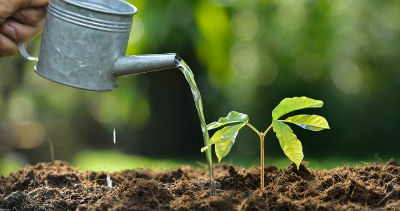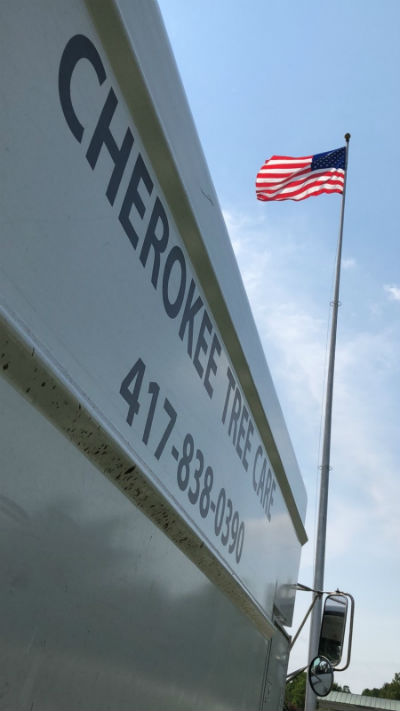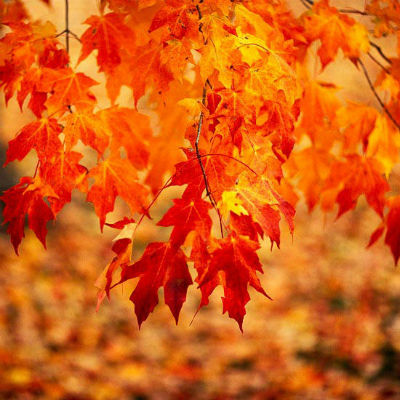In this quarter’s newsletter, we discuss how to water your trees throughout the year, a recent project we had the opportunity to work on, and how you can help your trees in the next season.
Much of this summer has been a season marked with heat and a lack of rain. Our summer season came fast and furious, and your trees may have dealt with some heat and drought stress. Some signs of drought stress are:
- Wilting leaves
- Smaller leaves than normal
- Stunted growth
- Leaf drop
- Early fall color
- Dying limbs
- Leaf Scorch
- Marginal Necrosis – leaves turning brown moving from the outside, inward

We have had some worried customers call about their trees losing leaves or branches. These are both symptoms of drought stress. Some trees, like Redbuds, will “self-prune” during drought by dropping small branches.
Newly planted trees that are still establishing are expending a lot of energy and require more water than a mature tree. Some species of trees like Willows, Bald Cypress, and Birches prefer moist conditions while others can handle more dry conditions.
A couple rules for watering trees:
Unlike the water that turf sprinklers provide, trees need slower and deeper watering.
Do not water the trunk or the leaves of the tree, water the ground where the root zone is.
Slow, deep watering every five to seven days during drought is ideal for mature trees in the Midwest (and four to six days during drought for mature trees in areas with 95 to 105-degree temperatures). When watering, remember that a tree’s root zone may extend well beyond the tree canopy.
For young or newly planted trees, slow, deep watering every two to three days is a good gauge.
If you have more questions about your trees and watering, please don’t hesitate to give us a call.

We love our community. We love that our trade is one that can help boost a community’s economy, aids those that may find themselves in an emergency situation after a storm, and that helps our customer’s investment in their home.
We love getting to work for our residential neighbors in the Springfield MO area, but it’s always an extra special treat to be selected for a job at a cemetery dedicated to those who fought for our country.
Many who have been in Springfield for any amount of time know about the iconic Springfield National Cemetery. According to the National Park Service, this 18-acre cemetery where many of our brave veterans rest, was established in 1867. In those days, south Springfield was vast, undeveloped land but today, the cemetery is surrounded by busy streets, neighborhoods, and businesses. While Springfield has grown leaps and bounds since the cemetery’s establishment, this site has retained its sacred honor as a resting grounds for those who lived a life of bravery and dedication to our country.
As time passes by, many of the cemetery’s trees have grown old next to these gravesites. Some trees have declined and have become more of a liability than an asset to this site. And though we never aim to remove trees, sometimes it is necessary for the safety (and investment) of the property and those who visit. We are grateful to work in this community and use our passion of trees to make Springfield and the surrounding areas a better place to live and work.
As the growing season comes to an end, our trees will begin to phase into the dormant season. One thing we can do to help our trees is replenish nutrients in the soil to help them resist damage from insects, diseases, and harsh weather.

If you can imagine a forest floor, trees have an abundance of decaying matter on the ground, above their root zone. This provides fertility for the soil and much-needed nutrients for uptake from the roots. In our landscapes, trees don’t have the decaying matter from leaves that are usually raked away.
Late fall and early spring are great times to fertilize your trees, however, not all trees are good candidates for fertilization. Most established, healthy trees don’t require the extra nutrients. Trees that are good candidates for fertilization are trees that are newly planted and need an extra boost for establishment – or those that have experienced stress or damage from insects, diseases, or harsh weather. Fertilizing will replace nutrients in the soil that may have been depleted, help trees overcome stress, and will encourage establishment in young trees, as well as promote root growth.
If you would like an arborist to take a look at your trees and determine if they would benefit from fertilization this fall, give us a call.

